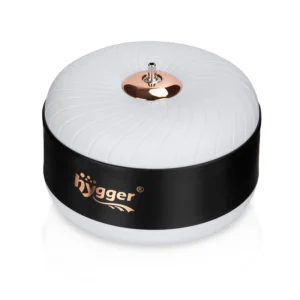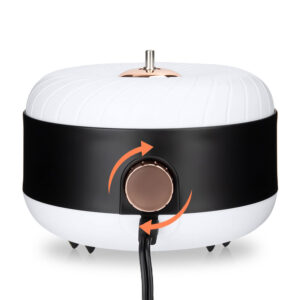The Most Endangered Fish Species in Aquarium
When we talk about Aquariums, a glimpse of fascination and wonder comes to our mind. They provide a source of adorance and charm to admire the real beauty and diversity of Aquatic life. At the same time, it’s the responsibility of the Aquarium Enthusiasts to protect the delicate ecosystem.
The International Union for Conservation of Nature (IUCN) lists a total of 1,616 species as Red by this time. These endangered species are at a major risk of extinction. In this article, we will discuss the most endangered fish and why it’s important to protect them for sea lovers.
Endangered Species
Endangered species are the species that face a high risk of extinction in the wild. The prime factor contributing to their endangerment is the over rate of fishing, especially by aquarists. The other reasons may involve habitat destruction, pollution, and climate change.
These factors create abnormality in the significant balance of aquatic ecosystems resulting in the extinction of these fish species. Understanding why these species are endangered is crucial for their conservation.
We can say, the combination of human activities and natural pressures that made their survival chances very minimal. The hour needs to identify all these factors involved in their extinction. Based on this, conservationists have to develop targeted strategies to protect these vulnerable fish.
Endangered Fish
Endangered fishes are species at risk of leaving their natural habitats and aquariums worldwide. Aquarists and hobbyists keep these species to adore and appreciate, but unfortunately, they face a major risk of extinction.
Certain fish species face endangerment, with some reaching the critically endangered status, indicating their proximity to extinction. However, we may consider others as endangered or vulnerable. Regardless of their specific status, the ultimate narrative is to protect these beautiful species that need our help to survive.
The Most Endangered Aquarium Fish
Here are the 10 most endangered aquarium fish and to conserve them is one of the core responsibilities of any Aquarist.
| 1. Blue-Green Chromis | |
| Green Chromis, also called Chromis viridis, is one of the fish species imported by the US market. They are major contenders of cyanide positive of about 81%. As people take a larger number of these species from the wild, breeding them becomes difficult.
Although they are still present in the target number in the wild. There is an overfishing rate associated with these species that is significantly affecting the ocean ecosystem. |
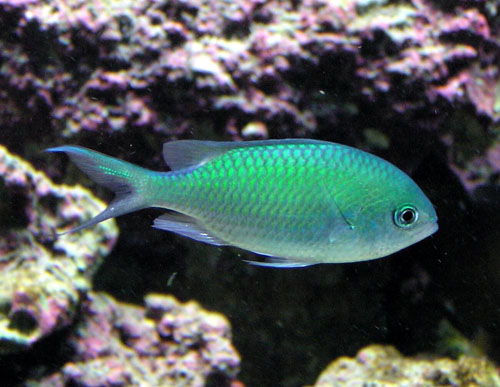 |
| 2. Yellow Tang | |
| Their extraordinary capture in Hawaii has depleted these beautiful creatures to about 80%. IUCN hasn’t classified them as endangered, but people take some animals from their homes for aquariums.
They do not have their captive bred available and they include them in the 4th largest US imports. |
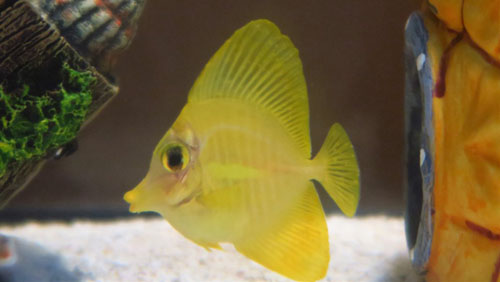 |
| 3. Blue Damsel | |
| The Indo-West Pacific commonly finds Blue Damsel, which the US includes in its 2nd largest import. Cycle tanks mostly sacrifice them, and 40% of them tested positive for Cyanide. They are currently not listed as an endangered species. Certain regions or habitats may threaten or endanger certain species of damselflies. | 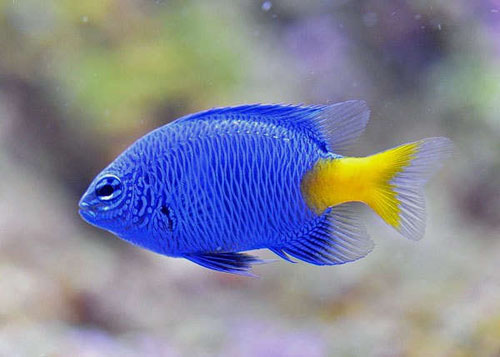 |
| 4. Banggai Cardinalfish | |
| They are currently red-listed by the IUCN as “endangered”. This tiny fish is from the Banggai Islands in Indonesia and has black-and-white colors and long, fragile fins. Unfortunately, this species has the highest rate of fishing because of its shining silver body, white spots, and black stripes. In 2002, about 600,000 species drastically overfished, and now the rate is 1.8 million per year. |
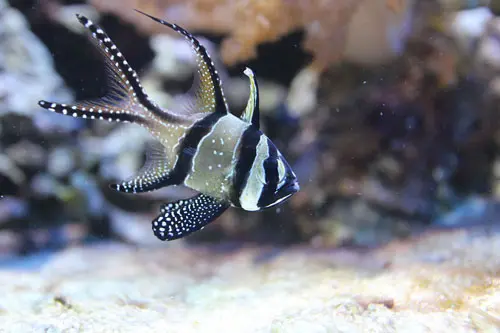 |
| 5. Blue Hippo Tang | |
| The Thailand Tangs, also known as Regal Tangs or Blue Surgeonfish, are at risk of becoming endangered. Blue fish in aquariums are popular but overfishing and habitat destruction are problems because of their vibrant color and unique shape.
Blue Hippo Tangs inhabit the Indo-Pacific region, especially around coral reefs. But their numbers are decreasing because of things like habitat damage, pollution, and capturing them for the pet industry. |
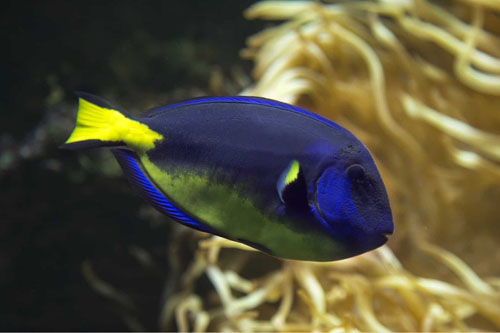 |
| 6. Red Tail Shark | |
| They are small water fish and native to Thailand. In 1996, experts declared these species extinct.
However, researchers discovered a small population in Thailand’s Chao Phraya basin in 2011. They are now critically endangered. Aquarium industry professionals breed these fish in captivity in the majority of cases. |
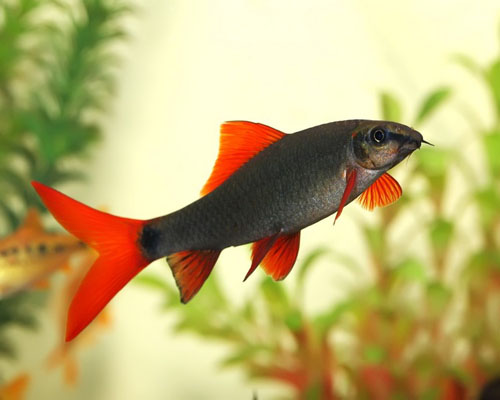 |
| 7. Blue Mandarin | |
| One of the fish species known for their stunning look and color is the one they are. They are the few animals underwater that have natural blue pigmentation and are in serious danger.
People often catch them in the wild, so Blue Mandarin have a low chance of surviving in captivity. They struggle to keep their color in the Aquarium and because they are fussy eaters, they are more likely to die. |
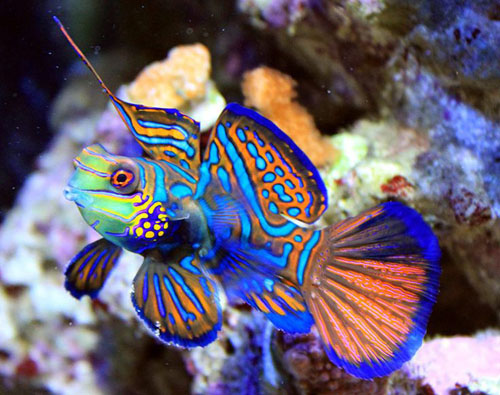 |
| 8. Staghorn Coral | |
| Staghorn Coral is an endangered species found in the Caribbean and Florida Keys. It is a main coral species there. These corals are more vulnerable to rising temperatures of oceans that cause significant coral bleaching and ultimately death. | 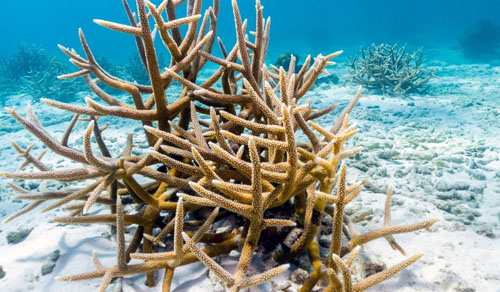 |
| 9. Australian Lungfish | |
| These species, listed as endangered species, can live more than 100 years. These unique fish are native to freshwater habitats in Queensland, Australia. They have a long history and existed during the time of dinosaurs, and people sometimes refer to them as “living fossils.” | 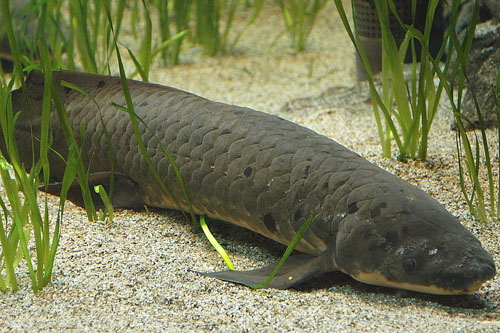 |
| 10. Lake Victoria Cichlids | |
| Lake Victoria Cichlids are a broad group of fish species that are native to Lake Lake Victoria in East Africa. Currently, authorities list some species as endangered. Especially, a large predatory fish “Nile Perch” has been creating a significant impact on their populations. There are various institutions taking part in its species survival program and are working on breeding these cichlids. | 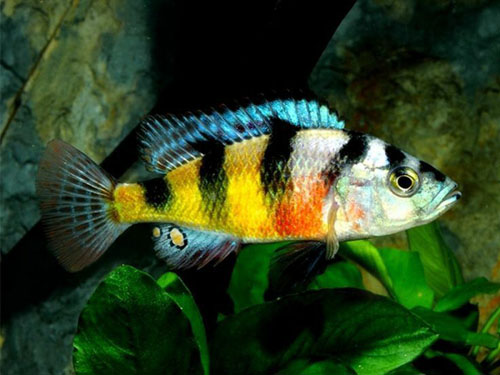 |
The following steps can preserve endangered fish
As responsible aquarists, it is their main responsibility to protect the fish species in the wild and within confined Aquarium spaces. We can take the following actions for the betterment:
- Support organizations dedicated to fish conservation.
- By educating everyone and ourselves about endangered species.
- We can avoid purchasing fish caught through different destructive methods.
- There is a need to participate in breeding programs or volunteering at aquariums.



